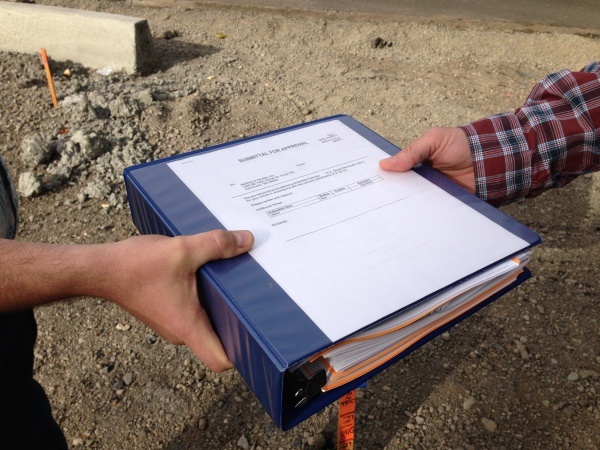
Issuing Notice to Proceed is exciting - you finally get to see your long-dreamed project take shape. But the first two weeks after Notice to Proceed can be fraught with project-delaying challenges if they sneak up on you. Last time I talked about the first pitfall that can arise after issuing Notice to Proceed: unanticipated or differing site conditions. In this post I’ll talk about the second: delayed contractor submittals.
At long last you’ve issued the Notice to Proceed (NTP) on your project. Not long after, you begin receiving critical material, equipment, and work plan submittals from the contractor.
It might seem like things are moving along nicely, but don’t take that for granted. Just because you’re receiving submittals from the contractor doesn’t necessarily mean everything is tracking as it should. Depending on the project, there could be one or more submittals with the potential to delay the project if they’re not submitted within the first two weeks.
If your project has an aggressive schedule or important interim milestone early in the process, don’t get caught in this all-too-familiar timing pinch.
Pitfall #2 - Delayed contractor submittals
Solution: Start requesting submittals early, even at the pre-construction meeting
It is the contractor's responsibility to understand the project’s timing. However, you’re probably familiar with receiving last minute submittals with a request for an expedited review in order to not delay the schedule. Being proactive in requesting these submittals will help to preserve the schedule and avoid a rushed review period.
If you're lucky, your contract documents will require the contractor to provide a list of all submittals, their anticipated due dates, and a corresponding activity item on their critical path method (CPM) schedule. Even if your contract documents are silent in this area, proper planning is still possible, but you may have to push a little harder.
The pre-construction meeting is a good place to start this effort. After careful review of the CPM schedule and contract documents, you'll be in a good position to develop a list and start tracking the status of these submittals. You may even need to contact the contractor prior to the pre-construction meeting to prompt them to bring critical submittals to the pre-con if they can. The pre-con can also be a good time to discuss details of how complex submittals should be packaged in order to minimize the chance it will be rejected, forcing a time consuming second review to occur.
Construction sequencing can get shuffled around for lots of reasons, so the process of staying on top of which submittals are critical to get 'in the hopper' early is a continuous one. Having a standing agenda item on the weekly progress meeting to discuss which submittals could impact the start of critical path work is always recommended.
Being aware of these submittals and tracking their status goes a long ways towards eliminating the potential for rushed reviews and delays. Request the submittals as early as possible, even if the contractor doesn’t like it. They’ll get over it.
Check out the previous post in this series:
Pitfall #1: Unanticipated or Differing Site Conditions
Have you ever faced the challenge of contractor submittal delays jeopardizing your project’s schedule? How did you solve the problem? Please leave a comment below to let me know.


Leave us a comment below